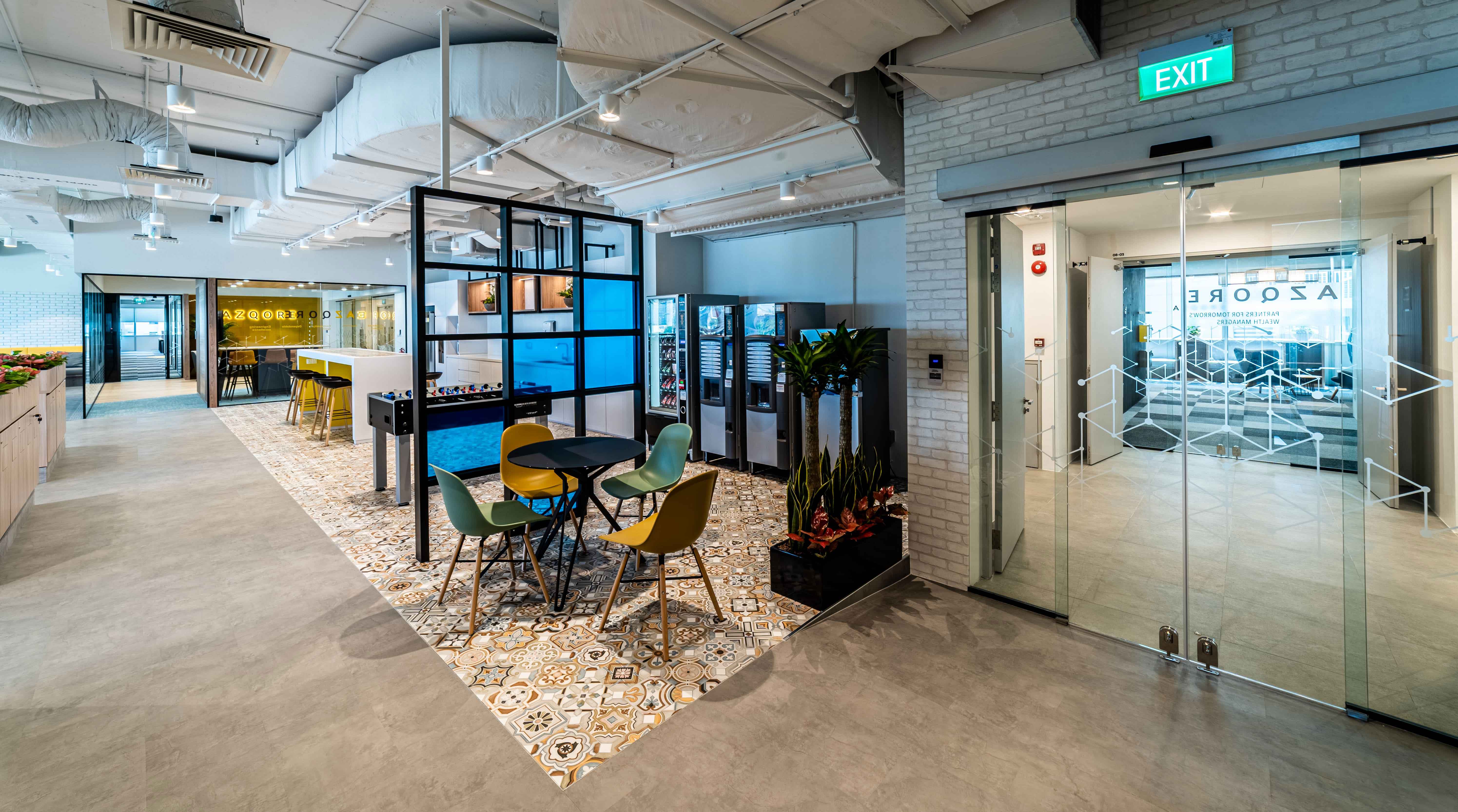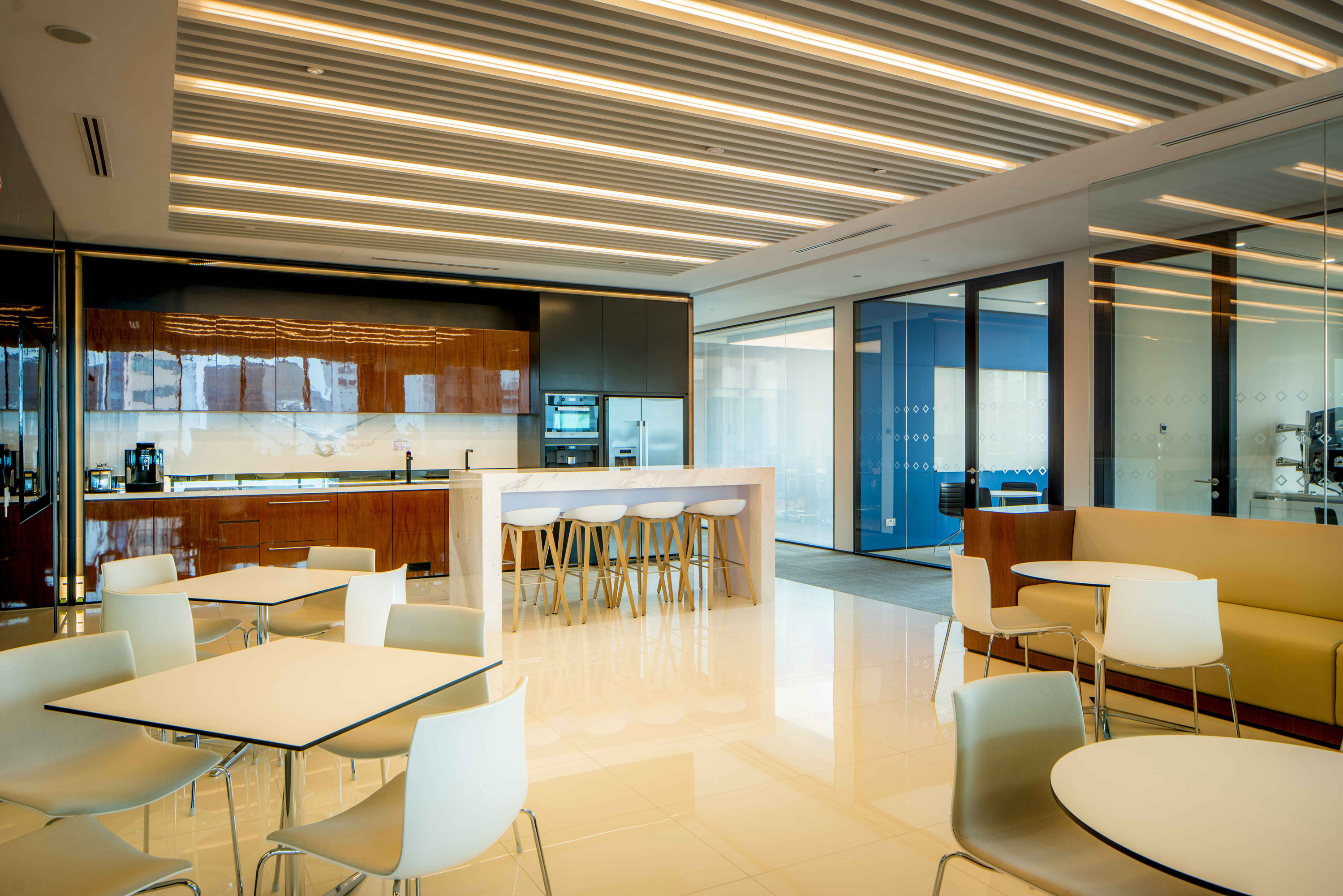3 trends affecting the finance industry workforce in Singapore and how office design is helping organisations adapt
How does a tiny country with a population of under 6 million, and limited natural resources, emerge as one of the most formidable financial capitals of the world?
Ask Singapore and it’ll tell you that the answer lies in a combination of fantastic legal framework, cutting-edge infrastructure and some incredibly sound policies that ensure economic stability. Today, as per the Global Financial Centers Index (GFCI), Singapore ranks 4th — close on the heels of New York, London, and Hong Kong as the top 3 financial centres of the world1.
However, not a country to rest on its laurels, Singapore is constantly reinventing itself to maintain its position as a leading financial hub. For instance, last year, the Monetary Authority of Singapore (MAS) launched a private markets programme (PMP) of $5billion for local fund managers who invest in private enterprises. This was shortly followed by another S$75m Grant for Equity Market Singapore (GEMS), in a bid to enhance the country’s status as Asia's hub for capital raising and enterprise financing2.
So how is Singapore responding to the key trends that are affecting the financial workplace of the future? How can workplace design strategy help Singaporean organisations adapt and stay ahead of changing trends? Let us have a look.
1. Automation
Automation is one of the biggest trends that is impacting Singapore’s financial workforce. Earlier this year, data released by the Monetary Authority of Singapore (MAS) and the Institute of Banking and Finance (IBF) showed that one-third of all the job roles in the financial sector may be impacted due to automation within 3-5 years3. Think AI-driven chatbots that take care of customer queries, interactive teller machines that reduce the need to have advisors at every bank counter, and intelligent programs that assess and analyse market risks without the need for manual intervention. These innovations will take a lot of mundane, time-consuming tasks off finance employees’ to-do lists, leaving them free to take on newer, more innovative roles.

This, of course, means that workplace design would need to be updated to complement this change. For instance, instead of being tied to a single desk, performing a routine task, employees will now experience a more varied workday. They may need to collaborate more and present their ideas to larger teams while only analysing and processing the most sensitive data manually. So, workplace design may need to include Neighbourhood-Based Choice Environments (NCEs), with one acoustic work pod functioning as employees’ home base, and various collaborative clusters for the more interactive parts of their day.
2. A more millennial workforce
The finance sector, much like any other industry, is primarily driven by knowledge and ideas. Good talent, thus, is one of the most significant assets a firm can invest in. However, according to a survey, 66% of financial services leaders in Singapore claim that they find millennials to be the most challenging group to recruit4. If Singapore wants to retain its edge as a financial hub, it cannot ignore the contributions this generation can make. Not only are millennials projected to occupy 50% of the global workforce by 2020, they are going to make up a huge part of the consumer base too5. Moreover, given that this is a generation that grew up with computers and mobile phones, they are well-equipped to stay ahead of the technological changes that drive the financial sector.
Millennials, however, have different motivations that drive them in their careers. They do not make career decisions based solely on the number of zeros in their pay cheques — they seek a company whose culture and values align closely with their own. Work-life balance is important to them, as is having a clear path for advancement. Companies that want to recruit and retain millennial employees thus, have to design their spaces and policies to cater to these changing attitudes.

Given that job roles are changing from monotonous to innovative, it is important to have workspaces designed for creative functions. Rather than stuffy, conventional spaces that make people feel walled in, the changing trends are highlighting a preference for open, mixed-use spaces where one can work and relax. Formidable, dimly lit offices are making way for airy, sunlit spaces with wall-to-wall windows, skylights and biophilic elements like green walls and terrace gardens.
People working in investment and wealth management firms often have to deal with high-stress situations on a regular basis. Wellness-led design elements like relaxation zones, game rooms and buzzing café-like pantries offer opportunities for employees to take a much-needed breather between meetings and presentations.
3. Dispersed and remote teams
There used to be a time when managers would spend their days sequestered in mahogany-lined offices, while junior employees would sit in cubicles on the main floor. Today, forget the same seat — these employees may not even work from the same office every day. With junior employees being placed off-shore in branch offices in Hong Kong, Philippines or Malaysia, and senior operational managers shuttling from country to country, the average financial office space is now way more diverse than ever before.
This throws up the challenge of handling dispersed teams, who all need to work together remotely. Corporate office interiors have to be designed in a way that bridges the gap between on-shore workers, remote managers and colleagues visiting from various branch offices. Rigid, assigned seating structures are making way for more open work neighbourhoods with cluster seating arrangements, interactive walls and movable partitions to enhance the flexibility of the space. This ensures that people can settle down anywhere, without feeling like they’re encroaching on another’s ‘territory’. However, designers also need to keep in mind that those working in financial service companies handle a lot of sensitive information regularly. So, the corporate office interiors cannot only be made of vast, open spaces that flow into one another — employees also need acoustic meeting rooms, work pods and phone booths where they can work in privacy or hold confidential conversations. They need secure storage areas where sensitive documents can be kept.
Financial firms can no longer afford to let connectivity be an issue either. Meeting rooms today are becoming more than just a conference table and a whiteboard — now, they are equipped with video-conferencing facilities, state-of-the-art set ups for A/V presentations, and collaborative tools like interactive whiteboards.
Seeking to stay ahead of these trends and be a part of the financial workplace of the future? Let's discuss.







